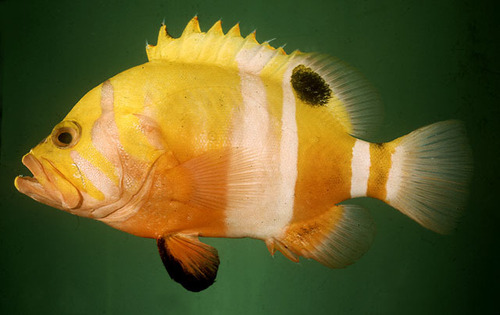
Neon Grouper
The Atlantic bluefin tuna (Thunnus thynnus) is a majestic and powerful fish, renowned for its incredible speed, size, and migratory journeys. This highly sought-after species plays a critical role in the marine ecosystem and holds significant economic value. However, its popularity has led to overfishing, making it a focus of conservation efforts. They are warm-blooded.
8 24 years
Lifespan
26 - 38 cm
Length
Least Concern
Conservation Status
10 km/h
Swimming speed
Carnivorous
Diet
Sedentary
Migration
Appearance Overview
The Atlantic bluefin tuna is renowned for its large size, streamlined body, and metallic blue coloration on top with a silvery underside.
Coloration
Dark metallic blue on top, silvery underside
Body Shape
Torpedo-shaped, built for speed and endurance
Fins
Two dorsal fins, the first depressible into a groove; a series of small finlets behind the second dorsal and anal fins
Length
Up to 13 feet (4 meters)
Weight
Up to 2,000 lbs (907 kg)
Diet
Carnivorous, feeding on a variety of fish, squid, eels, and crustaceans.
Feeding Behavior
Highly active predator, uses its speed and agility to hunt, often hunting cooperatively in schools to herd and capture prey.
Social Behavior
Forms large schools, especially during migration and spawning, but can also be found in smaller groups or solitary.
Commercial Relevance
Extremely high value, especially in the sushi and sashimi markets, leading to significant overfishing.
Conservation measures
International fishing quotas, size limits, and seasonal closures; efforts to improve fishing gear selectivity; and monitoring of populations by organizations such as ICCAT.
Status
Endangered (IUCN)
Threats
Overfishing (historically and ongoing), bycatch in fisheries targeting other species, climate change affecting prey distribution and spawning habitats.
Habitat Distribution
Depth Range
Surface waters to depths of over 3,000 feet (1,000 meters)
Geographic Range
Throughout the North Atlantic Ocean, including the Mediterranean Sea, and into the Gulf of Mexico.
Preferred Environment
Pelagic, open ocean environments, but also ventures into coastal waters, especially during spawning season.
Reproduction and Life Cycle
Breeding Habits
Spawns in two main areas: the Mediterranean Sea and the Gulf of Mexico. Spawning typically occurs in spring and summer.
Development Stages
Eggs hatch into larvae, which are pelagic and feed on plankton. Juveniles grow rapidly, undergoing significant physiological changes as they mature.
Fecundity
Highly fecund; a single female can release up to 30 million eggs per spawning season.
Maturity Age
Reaches sexual maturity relatively late, around 4-8 years, depending on the spawning population.
Faqs about Neon Grouper
Where can I find Atlantic bluefin tuna?
Atlantic bluefin tuna are found in the Atlantic Ocean, ranging from the cold waters of the North Atlantic to the warm tropical waters of the Gulf of Mexico and the Mediterranean Sea.
How long do Atlantic bluefin tuna live?
They can live up to 40 years or more.
Is it legal to fish for Atlantic bluefin tuna?
Yes, but due to their endangered status, there are strict regulations and quotas to manage their fishing.
What do Atlantic Bluefin Tuna eat?
Atlantic bluefin tuna are apex predators, feeding on a variety of fish, squid, and crustaceans.
Are Bluefin Tuna warm-blooded?
They are warm-blooded, unlike most fish, which allows them to maintain a higher body temperature than the surrounding water, aiding in muscle efficiency and speed.
Copyright @ Nature Style Limited. All Rights Reserved.
 English
English